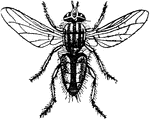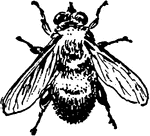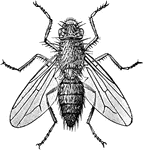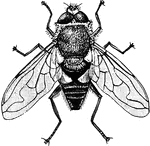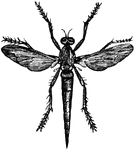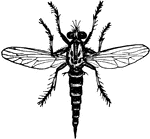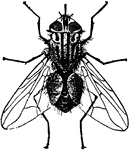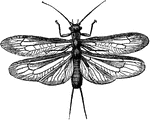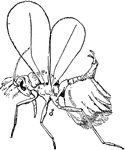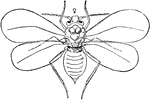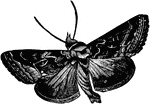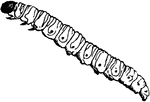This gallery includes 949 illustrations of other orders of insects.
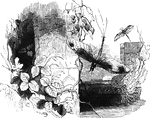
May Fly
"These insects are called Day-flies from the shortness of their existence in the perfect state;…
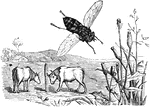
Ox Fly
"The Ox-fly, Oestrus bovis, is three-forths of an inch long, and lays its eggs in the skin of young…

Ruby Tailed Fly
They are rich colored insects, very active in the hottest sunshine and capable of rolling themselves…
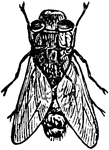
Sheep Bot Fly
The adult Sheep Bot Fly (Oestrus ovis) is a fly in the Oestridae family of bot flies and is known as…

Sheep Bot Fly
The adult Sheep Bot Fly (Oestrus ovis) is a fly in the Oestridae family of bot flies and is known as…
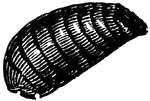
Sheep Bot Fly
The enclosed puparium of the Sheep Bot Fly (Oestrus ovis) is a fly in the Oestridae family of bot flies…
Sheep Bot Fly
The full grown larva of the Sheep Bot Fly (Oestrus ovis) is a fly in the Oestridae family of bot flies…

Sheep Bot Fly
The full grown larva of the Sheep Bot Fly (Oestrus ovis) is a fly in the Oestridae family of bot flies…
Sheep Bot Fly
The young larva of the Sheep Bot Fly (Oestrus ovis) is a fly in the Oestridae family of bot flies and…
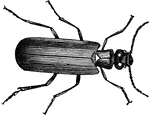
Spanish Fly
"These insects are common in the South of Europe, and are especially abundant in Spain, where they are…

Spider Fly
"Spider Fly is a genus of dipterous insects, chiefly allied to the forest fly. The insects are parasitical…
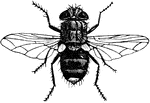
Yellow-Tailed Tachina Fly
The Yellow-Tailed Tachina Fly (Belvosia unifasciata) is an insect in the Tachinidae family and is also…
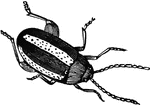
Turnip Fly
The European Turnip-Fly, Haltica nemorum, one of the most destructive species, belongs to a…
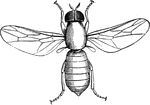
Window Fly
A small blue fly, slender and somewhat flattened in appearance, with yellow or reddish legs.
Frog Hopper on Leaf
"Frog Hoppers are ranked under the homopterous sub-order of insects. The name of frog hopper refers…

Adult Frog Hopper
"Frog Hoppers are ranked under the homopterous sub-order of insects. The name of frog hopper refers…

Larva, Frothy Section, and Perfect Insect of the Frog Hopper
Frog hoppers belong to the order Heteroptera. This order is also known as plant bugs. These insects…
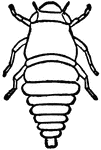
Larval Frog Hopper
"Frog Hoppers are ranked under the homopterous sub-order of insects. The name of frog hopper refers…

Larva, Frothy Secretion, and Perfect Insect of the Frog Hopper
Frog hopper belong to the same order as aphidoe, to the section which has the leathery upper wings.…

The Froghopper (Aphrophora Spumatra)
"The males make prodigious bounds, sometimes throwing themselves a distance of more than two yards."
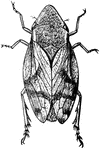
Dorsal View of Froghopper
Aphrophora quadrangularis is a species of Froghopper, an insect in the order Hemiptera.

Fulgora
A most singularly-formed insect; the front part of its head being much prolonged, and projecting upward…
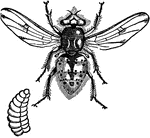
Gadfly of Horse
A gadfly, or Bot-fly, that lays its eggs on horses. After these eggs hatch on the skin, the larvae bore…
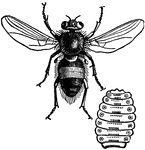
Gadfly of Ox
This illustration shows the Gadfly of the Ox. This illustration is enlarged, and also shows a Gadfly…
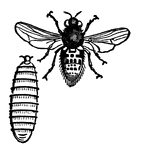
Gadfly of Sheep
The Gadfly of the sheep lays its eggs in the nostrils of the sheep. There, the maggots hatch and live…
Eggs of Gadfly, Estrus (Gasterophilus) Equi
"The eggs are white and conical. They adhere to the horse's hair."
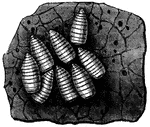
Gadfly Larvae in a Portion of the Stomach of the Horse
Larvae of Estrus (Gasterophilus) Equi. Representation of "the state of a horse's stomach attacked by…
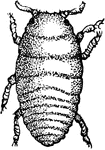
Grape Gall Louse Larva
"Grape Gall-louse (Phylloxera vastatrix), the small figures showing natural sizes. Larva as it appears…
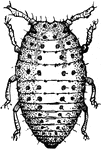
Grape Gall Louse
"Grape Gall-louse (Phylloxera vastatrix), the small figures showing natural sizes. Form of mature louse."…

Grape Gall Louse
"Grape Gall-louse (Phylloxera vastatrix), the small figures showing natural sizes. Form of mature louse."…
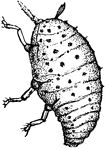
Grape Gall Louse
"Grape Gall-louse (Phylloxera vastatrix), the small figures showing natural sizes. Form of mature louse."…
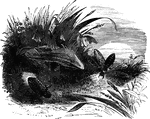
Glowworm
"The female is chiefly luminous. It is a flat, grayish-brown creature, rather more than half an inch…
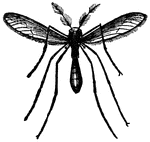
The Gnat (Culex Pipiens)
Gnats are a member of the Culicidae family. "They present a charming appearance when seen through…
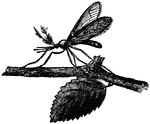
The Gnat (Culex Pipiens)
Gnats are a member of the Culicidae family. "They present a charming appearance when seen through…
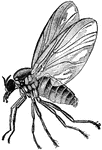
Buffalo Gnat
They are rather undersized, chunky flies, dark in color, with the thorax well developed and somewhat…
Buffalo Gnat Larva
The larva is curious little creatures, living under water in rather swiftly flowing streams, clinging…

Buffalo Gnat Pupa
The larva are curious little creatures, living under water in rather swiftly flowing streams, clinging…

